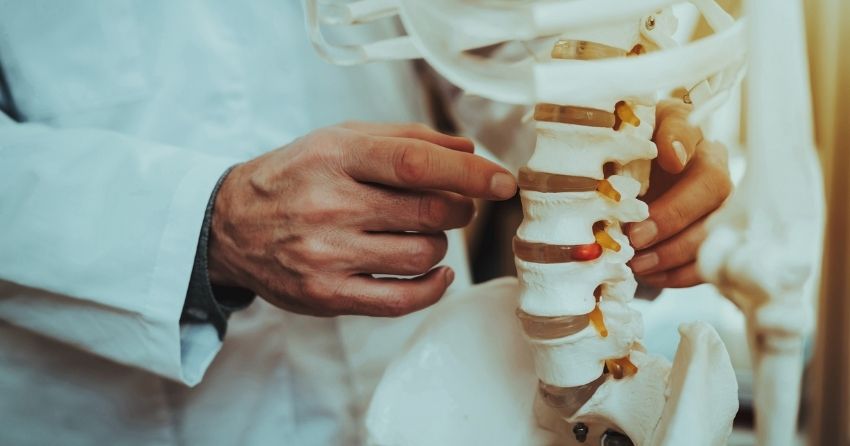Boosting NAD+ Battles Bone Breakdown and Fosters Formation of New Bone Cells

The breakdown and deterioration of bone is a major contributor to increased morbidity and mortality in older adults — especially women. As bones become more brittle with age, the skeletal system cannot fully support the body, leading to fractures, falls, and frailty with decreased independence and quality of life. While bone loss is observed widely in older adults, the underlying cellular and molecular mechanisms of skeletal aging aren’t entirely understood.
Some researchers have pinpointed that an age-related loss of NAD+ (nicotinamide adenine dinucleotide) may be one culprit. As an essential coenzyme — which enables other enzymes to function properly — NAD+ is required for cell function, energy production, and regulation of the aging process. In a recent study, researchers from the University of Arkansas provide evidence that lost NAD+ is implicated in age-related bone loss and that repleting NAD+ with one of its precursors, nicotinamide riboside (NR), restores youthful bone levels and attenuates bone loss in aging female mice. With this research, Kim and colleagues provide evidence that boosting NAD+ may be a valuable strategy for protecting against the commonly seen bone loss in older adults — and perhaps even regenerating bone altogether.
The Domino Effects of Bone Breakdown
Throughout life, bone integrity is maintained by a process known as bone remodeling, involving cells called osteoclasts and osteoblasts. Osteoclasts work to absorb and remove older bone, allowing for the development of new bone by osteoblast cells. With age, osteoblast numbers decline, leading to excessive bone removal without enough new bone growth.
There are several complex factors behind age-related bone loss, including declining sirtuin activity. Sirtuins are a family of proteins that play a crucial role in health and longevity. One of the sirtuins, SIRT1, is involved in bone integrity and formation. As sirtuins are dependent on NAD+, a drop in NAD+ levels will lead to declining sirtuin activity.
An increase in oxidative stress — the accumulation of compounds called reactive oxygen species (ROS) that damage cells — in bone-related cells also contributes to decreased bone formation. This buildup of ROS then stimulates a transcription factor (a molecule that controls the activity of specific genes) called FOXO1 to bind to another compound called β-catenin. This domino-like process will eventually decrease new osteoblast growth and inhibit bone formation.
On the flip side, increasing SIRT1 activity — which could be achieved by boosting NAD+ levels — breaks the bond between FOXO1 and β-catenin, allowing new osteoblast cells to develop and create bone. With this in mind, Kim and colleagues looked at how increasing NAD+ via NR in both cell-based cultures and mice affected skeletal aging and bone loss.

Nicotinamide Riboside Reverses Age-Related Bone Deterioration
The Arkansas-based research team first looked at the molecular changes in cell cultures from older mice equivalent to about 70 in human years. These older mouse cells exhibited low NAD+ and NAMPT, the enzyme needed for the primary pathway to make NAD+ from a related compound called nicotinamide.
After adding NR to the aged mouse cells, NAD+ levels were significantly elevated, and the cells showed reduced binding between FOXO1 and β-catenin. The NR-treated cells also had decreasing markers of senescence — when cells stop growing and dividing but remain in the body, causing inflammatory damage. These cellular changes led to an increased formation of osteoblasts, suggesting that NR may attenuate the typical age-related arrest of new bone growth.
As Kim and colleagues state in their paper, “Our present findings that NR administration decreases markers of senescence in osteoblast [precursor cells] from old mice provide strong support for the contention that a decline in NAD+ is a major contributor to the age-associated bone cell senescence.”
The researchers also looked at how NR affected skeletal aging in female mice. The mice who received NR in their drinking water for eight months, from middle- to old age, showed markedly higher femoral cortical thickness — a marker of stronger and thicker leg bones. As cortical bone is the dense outer bone that protects the internal layers and makes up nearly 80% of skeletal mass, this type of bone is essential for bearing weight and supporting body structure. The NR-treated mice also exhibited over 40% more osteoblast numbers than non-treated, aged mice, indicating a boost in new bone formation.

NAD+ Boosters Battle Bone Breakdown
Overall, these results suggest that repleting NAD+ with long-term NR administration can attenuate skeletal aging in female mice, which could prove highly beneficial if replicated in humans, as women are more susceptible to age-related bone loss than men. (However, men are not immune to this breakdown — one in five men over age 50 are also affected by bone loss.)
While skeletal aging is highly complex, Kim and colleagues provide evidence that points to declining NAD levels — and the multiple downstream effects that come with this, like low sirtuin activity, oxidative stress, and FOXO stimulation — are a significant contributor. As Kim and colleagues conclude, “Repletion of NAD+ with precursors such as NR, therefore, may represent a therapeutic approach to age-associated [bone loss] as it does for other age-related pathologies.” Although this study didn’t look at the effects on bone growth in humans, these results allude to NR’s capabilities for fighting or preventing age-related bone loss in future research.
References:
Kim HN, Ponte F, Warren A, et al. NPJ Aging Mech Dis. 2021;7(1):8. Published 2021 Apr 1.





